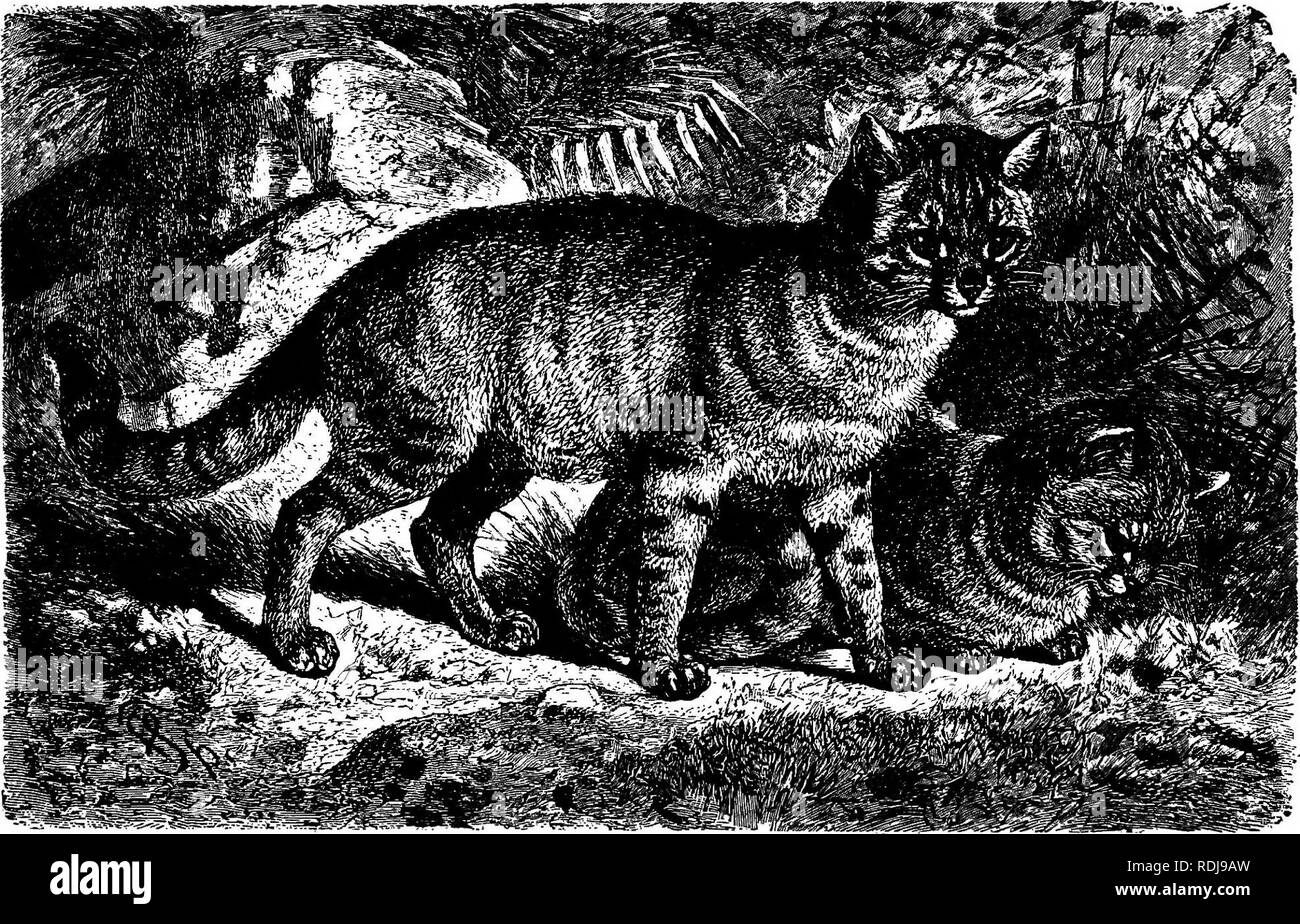. The animals of the world. Brehm's life of animals;. Mammals. 102 THE BEASTS OF PREY. degenerated in the woods. The latter are frequently met with, but they never attain the size of the Wild Cats, though greatly exceeding that of the domestic Cat. They are as ferocious and dangerous as the Wild Cat, and after several generations have been born wild in the forest these animals come to resem- ble their progenitor, the Egyptian Cat, in color and marking, though always lacking the blunt tail, the light spot at the throat and the dark soles of their ancestor. The animal known as Wild Cat in Americ

Image details
Contributor:
The Book Worm / Alamy Stock PhotoImage ID:
RDJ9AWFile size:
7.1 MB (1 MB Compressed download)Releases:
Model - no | Property - noDo I need a release?Dimensions:
1973 x 1266 px | 33.4 x 21.4 cm | 13.2 x 8.4 inches | 150dpiMore information:
This image is a public domain image, which means either that copyright has expired in the image or the copyright holder has waived their copyright. Alamy charges you a fee for access to the high resolution copy of the image.
This image could have imperfections as it’s either historical or reportage.
. The animals of the world. Brehm's life of animals;. Mammals. 102 THE BEASTS OF PREY. degenerated in the woods. The latter are frequently met with, but they never attain the size of the Wild Cats, though greatly exceeding that of the domestic Cat. They are as ferocious and dangerous as the Wild Cat, and after several generations have been born wild in the forest these animals come to resem- ble their progenitor, the Egyptian Cat, in color and marking, though always lacking the blunt tail, the light spot at the throat and the dark soles of their ancestor. The animal known as Wild Cat in America , is very different from the European animal of that name, and is in reality a Lynx. (See Red Lynx.) THE EGYPTIAN CAT. The next member of this group is the Egyptian Cat {Felis mamculata). Ruppell discovered it in Nubia, on the western bank of the Nile, in a desert where rocky stretches of country alternated with bushy tracts. Later writers have found it in Sou- dan, in Abyssinia, in the innermost centre of Africa and in Palestine. The length of its body is about that the Egyptian Cat is more common in the Niam-Niam country than in any other part of Africa that has been fully explored, so that the cen- ter of the continent might be considered the point from which it spread. The Niam-Niam do not pos- sess a domestic Cat, in the proper meaning of the word, but their boys capture the Egyptian Cat and wholly or partially tame it. At first they are tied in the vicinity of the huts, and soon become com- pletely at home in the house, where they make it their business to catch the Mice which infest these dwellings in great numbers. Venerated Ebers in "An Egyptian Princess, " by the Ancient says : " The Cat was probably the Egyptians. most sacred of all the sacred ani- mals which the Egyptians regarded with veneration. Herodotus says that when one of their houses was on fire, the Egyptians first thought of saving the Cat and then of putting out the fire, and when a Cat di